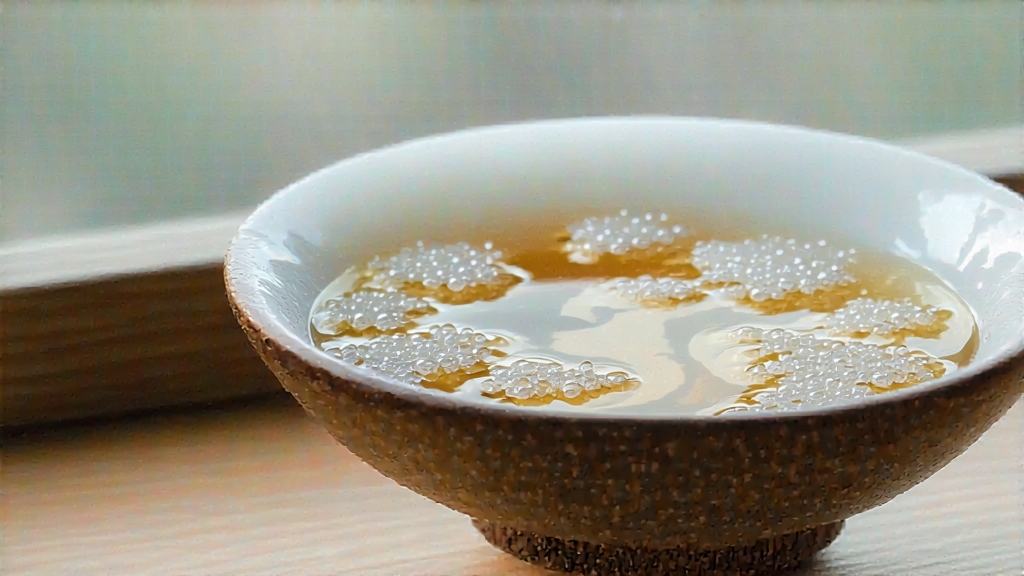
If green tea is the youthful burst of spring and pu-erh the wise elder of the tea world, then Bai Hao Yin Zhen—literally “White Hair Silver Needle”—is the moonlight that slips unnoticed through the shutters, illuminating without announcing. Revered inside China as the aristocrat of white tea and still a quiet secret abroad, this cultivar carries within its down-covered buds the cool air of Fujian’s March dawns, the patience of 72 hours of slow withering, and a flavor so subtle it teaches you to listen before you taste.
History: from imperial tribute to minimalist icon
Song-dynasty scrolls already mention “white tablets” pressed for the palace, but Yin Zhen’s recognizably modern form—only unopened buds, no leaf or stem—emerged in the 1790s around Tai Lao Mountain, Fuding. When the Qing court moved its tribute-tea procurement office to nearby Zhenghe, Silver Needle entered the Forbidden City wrapped in silk and packed with camphor leaves to preserve its perfume. European records first encounter it in 1888, when a Fuzhou missionary mailed “downy silver shoots” to the British Museum; the package was labelled “Chinese champagne of teas,” a phrase that still circulates among specialty merchants. After 1949 the state re-organized gardens into collectives, selecting the big-bud Da Bai Hao cultivar whose amino-acid-rich cells create the tea’s signature sweetness. Today, protected-geographical-indication rules confine authentic Yin Zhen to three counties—Fuding, Zhenghe and Songxi—much like Champagne grapes in France.
Terroir: why the bud wears a fur coat
The Min-North mountain arc traps humid air from the East China Sea, forming morning fogs that filter UV light and force the bush to manufacture more theanine. Daytime temperatures around 18 °C keep enzymatic activity gentle, while 80 % relative humidity prevents the buds from drying too quickly. The result is a bud densely packed with trichomes—tiny hairs that appear silver under light—each one a microscopic straw designed to modulate moisture. Locals joke that the mountain “knits a sweater for every baby leaf.”
Plucking etiquette: one bud, one code, one dawn
Rules are strict: only the first flush after winter dormancy, only on days when the overnight low stays above 10 °C, only buds between 15–25 mm length, and never after 10 a.m. when the sun grows assertive. Experienced pluckers use a “twist-lift” motion that snaps the petiole without squeezing the bud; any bruise will oxidize into an unsightly red tip down the line. A full kilogram of finished tea needs roughly 30 000 buds, all plucked within a two-week window. In the gardens you hear no conversation, only the soft click of fingernails against stem—an acoustic signature of the season.
Craft: the art of doing almost nothing
Unlike green tea that is “killed-green” with heat or oolong that is rolled to bruise the edges, white tea is defined by what it refuses to do. The buds are simply spread on bamboo trays in a ventilated loft, left to wither for 48–72 hours while moisture drops from 75 % to 8 %. No fans, no ovens—only the slow dialogue between leaf and air. Masters read the weather like sailors: if the north wind arrives too dry, they mist the room with mountain spring water; if rain raises humidity above 85 %, charcoal fires in the corridor provide invisible warmth. When the bud feels glass-brittle and releases a faint chestnut aroma, it is gently baked for 20 minutes at 40 °C to fix the residual enzymes. The entire process is a meditation on restraint; one proverb states, “The hand that makes Yin Zhen never clenches into a fist.”
Grades & micro-terroirs
Although Western vendors often sell a generic “Silver Needle,” insiders recognize three micro-grades:
- Beifang Yin Zhen – grown on north-facing slopes at 600–800 m, shaded until 9 a.m.; the slowest growth yields buds richest in theanine, infusing a brothy, marine sweetness reminiscent of kombu dashi.
- Zhenghe Yin Zhen – higher altitude (800–1000 m), larger diurnal range; buds carry more polyphen